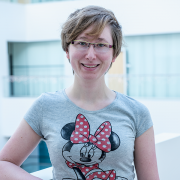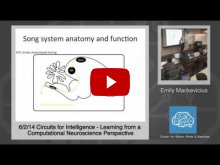
How does the brain learn complex behaviors? Does it break them into simpler pieces? How are goals represented, and translated into actions that produce those goals? Songbirds learn to imitate the songs of tutors they heard as juveniles. From unstructured babbling, repeatable syllables emerge. My work focuses on how the brain of a young bird learns to produce each new syllable. My neural recordings and modeling work suggest a simple mechanism by which timing learned in one domain (listening to a tutor) could be transferred to support learning in a new domain (singing).
Computational neuroscience is a fascinating and expanding subject. Over the past few years, I've been involved in teaching several computational neuroscience courses, including designing new curricula. Links to relevant materials are below:
- Tutorial series I founded in computational topics related to brain and cognitive sciences.
- Methods in Computational Neuroscience, a Woods Hole summer course I TAed.
- The Center for Brains, Minds and Machines Woods Hole summer course.
- Intro to Neural Computation (9.40), a MIT undergrad course I TAed and helped design.

